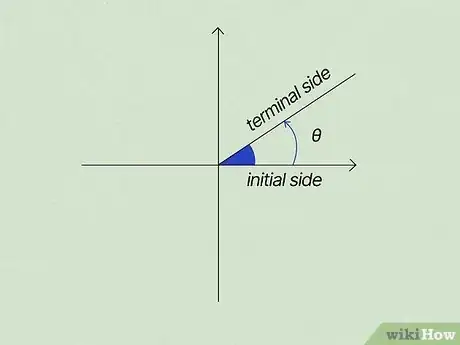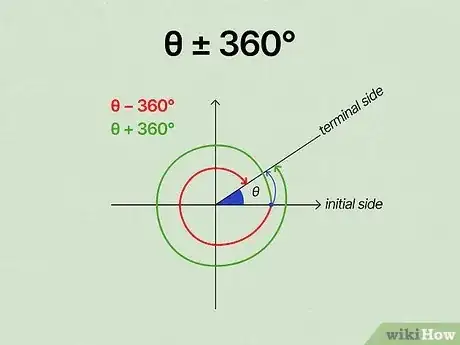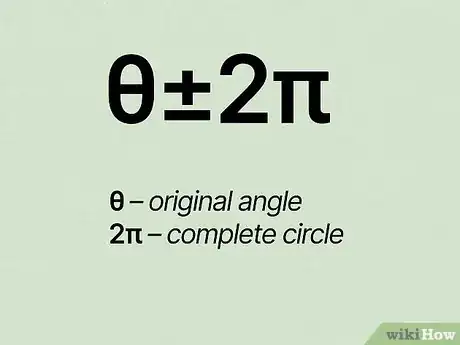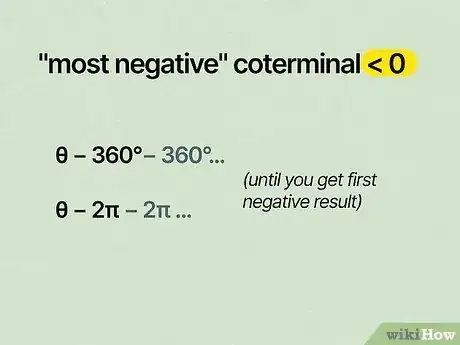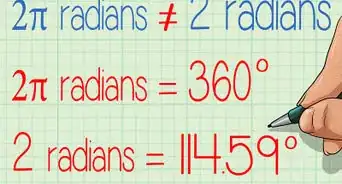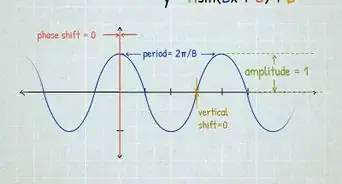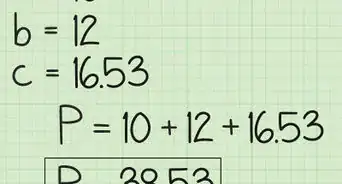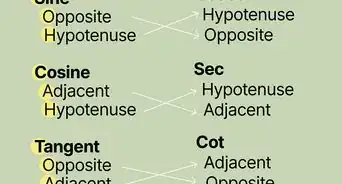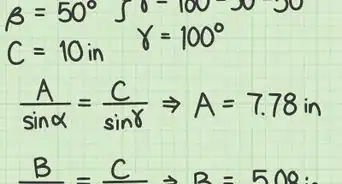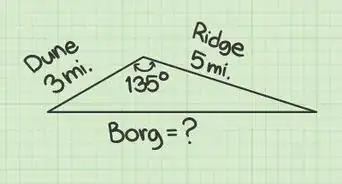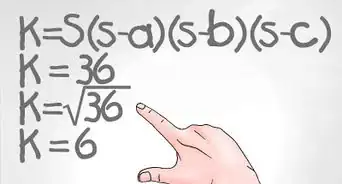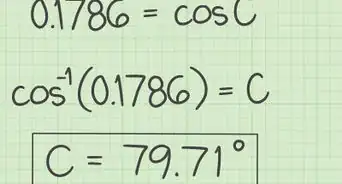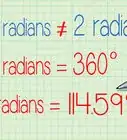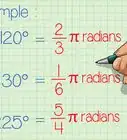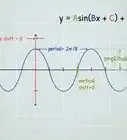This article was co-authored by wikiHow staff writer, Krysten Jackson. Krysten Jackson is a Chicago-based writer with a love of language and learning. She has contributed her editing skills to multiple content teams and publishing houses. Now, Krysten writes for wikiHow as an Editing Fellow, hoping to help others while they explore new topics and skills. Krysten graduated from Northwestern University in 2019 with a B.A. in English, focusing on Creative Writing and Linguistics.
There are 7 references cited in this article, which can be found at the bottom of the page.
This article has been viewed 4,660 times.
Learn more...
Coterminal angles are angles that share the same terminal side, the location where an angle stops opening, when drawn in the standard position.[1] Finding coterminal angles may sound tricky at first, but the formula is actually very simple once you get the hang of it. Keep reading to learn how to solve this problem.
Things You Should Know
- Coterminal angles are angles that stop opening at the same place when drawn in the standard position.
- Find any coterminal angle by adding or subtracting 360° or 2π radians from the original angle.
- Solve for more than one coterminal angle by adding or subtracting a full revolution multiple times.
- Find the most negative and least positive coterminal angles by adding and subtracting until you first cross 0 degrees or radians.
Steps
Finding a Coterminal Angle
-
1Find your original angle. The angle given to you is the starting point for this problem. The degree of the angle may be provided in the problem or you may need to find it with a protractor or a ruler.
- This angle should be in the standard position. The vertex is fixed to the origin of the graph and the initial side, where the angle starts opening, runs along the x-axis.[2]
-
2Add or subtract 360° when working with degrees. To find a coterminal angle, you must rotate the terminal side in a complete circle. Simply take your original angle and add or subtract 360°.[3]
- The formula can be written as θ±360°, where θ is your original angle.
- For example, if your original angle was 30°, you may write 30° + 360°. The resulting coterminal angle would then be 390°, or 13π/6 rad if you need to convert to radians.
- Adding one revolution would be considered the smallest positive coterminal angle.[4] This also applies to radians.
Advertisement -
3Add or subtract 2π rad when working with radians. The formula for finding a coterminal angle in radians is θ±2π, where θ is your original angle and 2π is a complete circle. Simply plug in your original angle to solve.[5]
- If your θ is π/6 rad, you may set up the problem as π6 - 2π. The resulting coterminal for this equation is -11π/6 rad, or -330° if you need to convert to degrees.
- Subtracting one revolution would be considered the smallest negative coterminal angle.[6] This applies when working with degrees, as well.
Multiple, Least Positive, and Most Negative Coterminal Angles
-
1Add 360° or 2π radians multiple times to find more coterminal angles. Angles have an infinite amount of coterminals, as you can keep adding or subtracting 360° or 2π rad.[7] If you need to find more than one coterminal angle, just repeat the formula to get more answers.
- This formula can be written as θ+360x and θ+2πx, where θ is your original angle and x is the amount of times you need to rotate.
- If your original angle was 52°, adding 360° twice will give you 412° and 772°.
- Taking the same angle, 52°, subtracting 360° twice will return -308° and -668°.
- You can also add and subtract from the same angle to get more than one coterminal. This works great if you need to find both a positive and a negative coterminal angle.
- For instance, if you need to find a positive and negative coterminal of π/4, adding 2π will give you the positive result 9π/4 rad and subtracting will give you the negative -7π/4 rad.
-
2For "least positive" coterminal, find the last coterminal greater than 0. For a coterminal angle to be the least positive it has to be the last coterminal greater than 0 degrees or radians. To find this, simply subtract 360° or 2π rad until just before you hit the negatives.[8]
- If your original angle is 361°, the least positive coterminal angle will be 1°. Subtracting anymore will result in negative angles.
- Alternatively, the “least positive” will be the first coterminal greater than 0 if your original angle is negative.
- Your original angle could be -250°. The least positive coterminal would then be 110°, which is found by adding one revolution.
-
3For the “most negative” coterminal, find the first coterminal less than 0. The most negative coterminal angle is the first coterminal angle you find that’s less than 0 degrees or radians. Find this by subtracting 360° or 2π rad from a positive angle until you get your first negative result.[9]
- For the starting angle 3π/4 rad, the most negative coterminal angle would be -5π/4 rad. This is found by subtracting 2π rad once, which gives a negative angle.
- If your starting angle is already negative, the last negative coterminal before your cross 0 would be the most negative.
- Let’s say your original angle is -17π/4 rad. The most negative coterminal would be -π/4 rad, which is found by adding 2π twice. Adding another 2π would push you into the positives.
References
- ↑ https://www.mathopenref.com/coterminal.html
- ↑ https://www.mathopenref.com/trigstandardposition.html
- ↑ http://jwilson.coe.uga.edu/EMAT6680/Adcock/Adcock6690/RLAInstructUnit1/RLATrigLesson1.htm
- ↑ https://www.youtube.com/watch?v=VA11qbwh64Y&ab_channel=BrianMcLogan
- ↑ https://youtu.be/2j85xgNdwCM
- ↑ https://www.youtube.com/watch?v=VA11qbwh64Y&ab_channel=BrianMcLogan
- ↑ http://jwilson.coe.uga.edu/EMAT6680/Adcock/Adcock6690/RLAInstructUnit1/RLATrigLesson1.htm
- ↑ https://www.youtube.com/watch?v=vleRbqCEMcc&ab_channel=TheMathSorcerer
- ↑ https://www.youtube.com/watch?v=xfgleE_YR7s&ab_channel=patrickJMT
